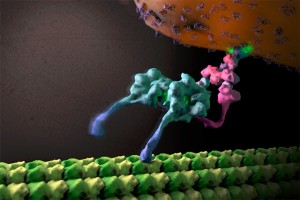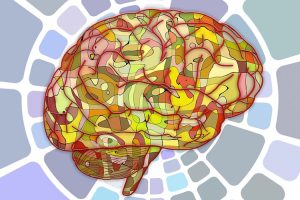Snapshot of the cell’s cargo transporter com...
The insight into the structure of motor proteins shows how they interact to deliver nutrients to cells
How does evolution work on the level of the sperm? What is the evolutionary advantage of sperm cooperation? A Professor of Zoology at Harvard University Hopi Hoekstra talks on the molecular mechanisms that allow to discriminate the sperm of one individual from his brothers’.
When we think about Darwin we often associate him with the idea of natural selection, that is, there’s differential survival among individuals and this is the idea fitness. But there’s another component of fitness that we don’t think about quite so vividly. But this is an idea that Darwin put forth as well, and that’s the idea of sexual selection. The idea that reproduction is really the key to fitness, because it doesn’t matter if you survive unless you survive to reproduce. And there are lots of great examples of sexually selected traits.
So this is this really interesting case in which you have sperm cooperation. Sperm will actually clump together and outrace single non-cooperating sperm. But if you think back to what I said before, this race is the sort of problem in that you want to clump, but you don’t want to clump with sperm from the other male because you want to help sperm from your male, but not the other guy’s sperm. So she raised the question then can they discriminate, can they preferentially clump with sperm from one male to the exclusion of the other? So to answer this question she did a really clever experiment. So what you can do is you can take sperm and using a very simple dye dye them different color. So she collected sperm from two different males, initially from two different species, then repeated this with two males that were unrelated, and then even two brother males.
And as I mentioned, the big goal now is to understand how this may have evolved in terms of the underlying molecular mechanism. What is it about this sperm that allows them to clump together? So are there, for example, sticky proteins on the surface of the sperm heads? And is that mechanism the same or is there another mechanism that then allows them to discriminate even sperm from a brother? And I think this remains one of the great challenges in our group – to understand the molecular mechanism of sperm cooperation and discrimination.

The insight into the structure of motor proteins shows how they interact to deliver nutrients to cells

Blocking an oxygen sensor in a breast cancer tumor impairs its ability to metastacize

Physiologist John Stein on Parkinson's disease, the applications of deep brain stimulation, and its side effec...